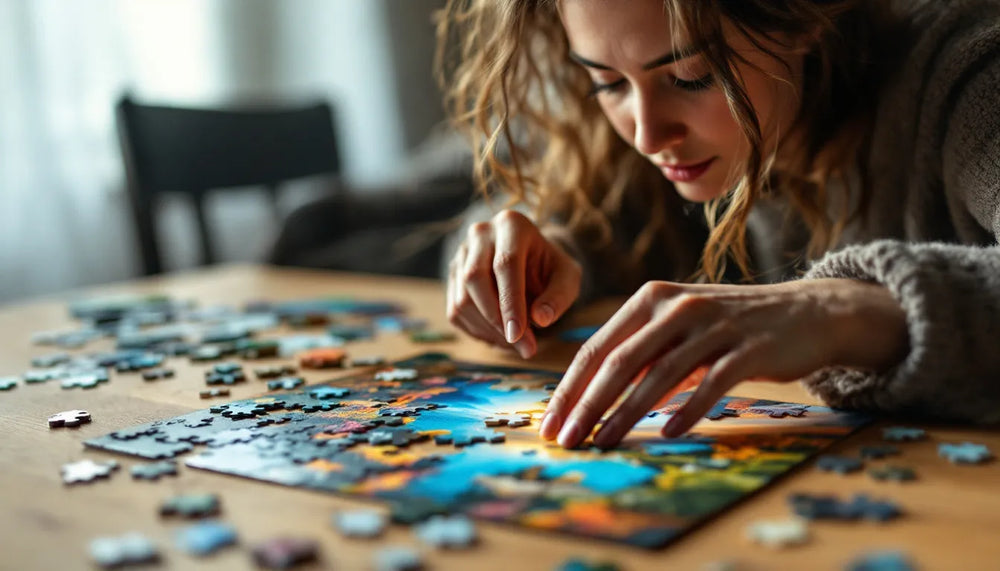
How to Solve Puzzles Fast: Tips and Tricks for Quick Thinking
In the world of puzzles, speed can be just as thrilling as the challenge itself. Whether you're tackling a jigsaw, crossword, or Sudoku, mastering the art of solving puzzles quickly can enhance your enjoyment and boost your cognitive skills.
This guide will delve into effective strategies and techniques to sharpen your puzzle-solving prowess. Hone pattern recognition and develop a systematic approach to train your brain for speed and efficiency. Turn puzzle-solving into an exhilarating race against the clock.
Key Takeaways
- Start by assembling the puzzle border using all the edge pieces.
- Sort pieces into trays by color, pattern, or shape for quick access.
- Use a well-lit workspace to enhance visibility and reduce eye strain.
- Focus on completing smaller, distinct sections to build momentum.
- Refer to the puzzle box image frequently for accurate piece placement.
Best Tips for How to Solve Puzzles Fast
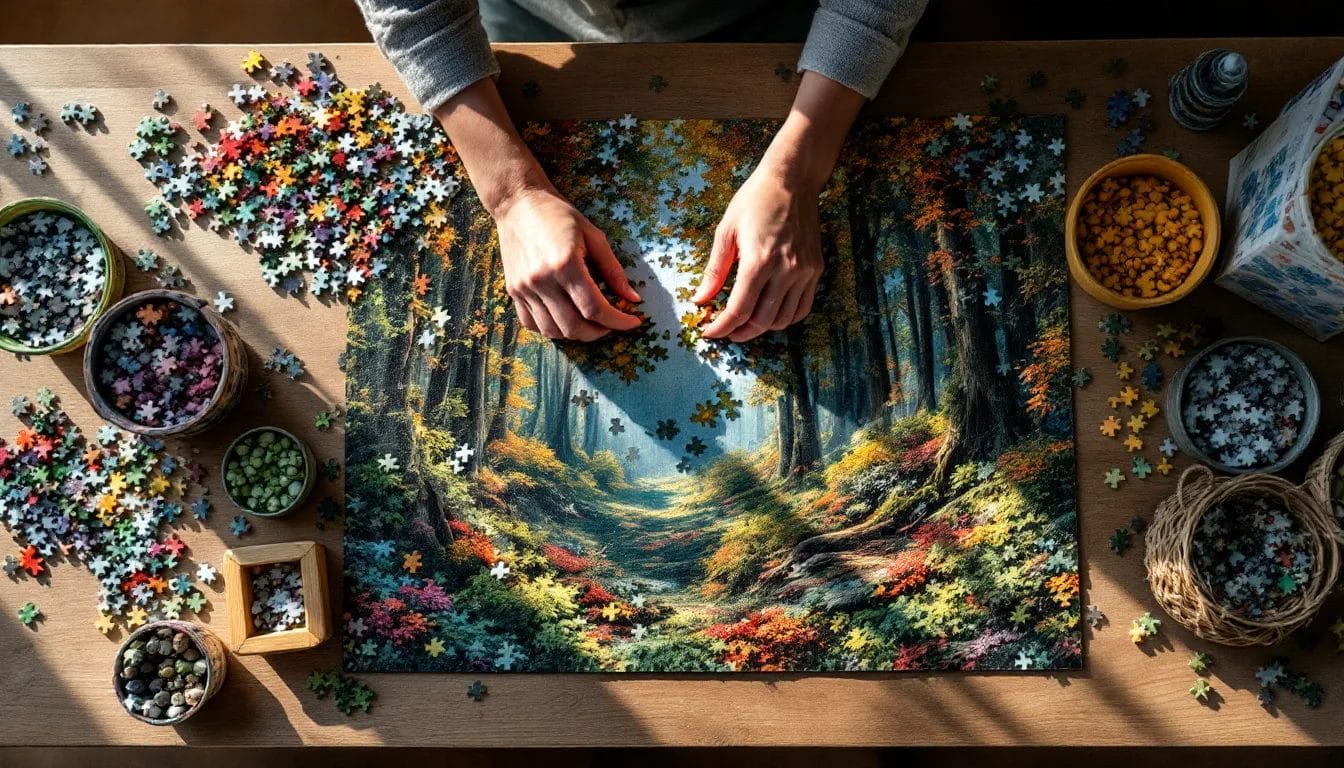
To enhance your puzzle-solving skills, let's explore some effective tips for speeding up the process.
How to Effectively Sort Puzzle Pieces
To sort puzzle pieces effectively, start by flipping all pieces face up, ensuring each one is visible. Next, sort the edge pieces to form the puzzle's border, giving you a clear outline and a starting point.
For the remaining pieces, use sorting trays to group them by color and pattern. This helps you quickly identify where each piece fits within the larger image. For instance, stash all blue sky pieces in one tray and all green tree parts in another.
If you're tackling more complex sections, sort pieces by their shape. This can be a lifesaver for fitting those tricky spots.
Importance of Lighting When Solving Puzzles
Proper lighting substantially enhances the puzzle-solving experience. Ideal lighting reduces eye strain and improves your ability to distinguish colors accurately. These are essential for identifying subtle variations in puzzle pieces.
Opt for natural light or a daylight-spectrum lamp to boost visibility and guarantee precision in monochromatic or intricate sections. Adjustable lighting helps minimize shadows, allowing you to see each piece clearly from all angles.
Why Is It a Good Idea to Take a Break from the Puzzle?
Why might taking a short break from your puzzle be beneficial? When you take a break, you allow your brain to reset. This can make it easier to spot patterns or pieces you may have overlooked.
Just stepping away from the puzzle for 10-15 minutes can help you relax and reduce frustration, especially when the pieces don't seem to fit. Plus, breaks prevent mental fatigue, boosting your focus and efficiency once you return.
They also keep the process enjoyable and maintain your motivation. By allowing your subconscious to process the puzzle layout during breaks, you might find that solutions come to you more naturally, helping you solve challenging sections faster.
How to Assemble a Jigsaw Puzzle Efficiently
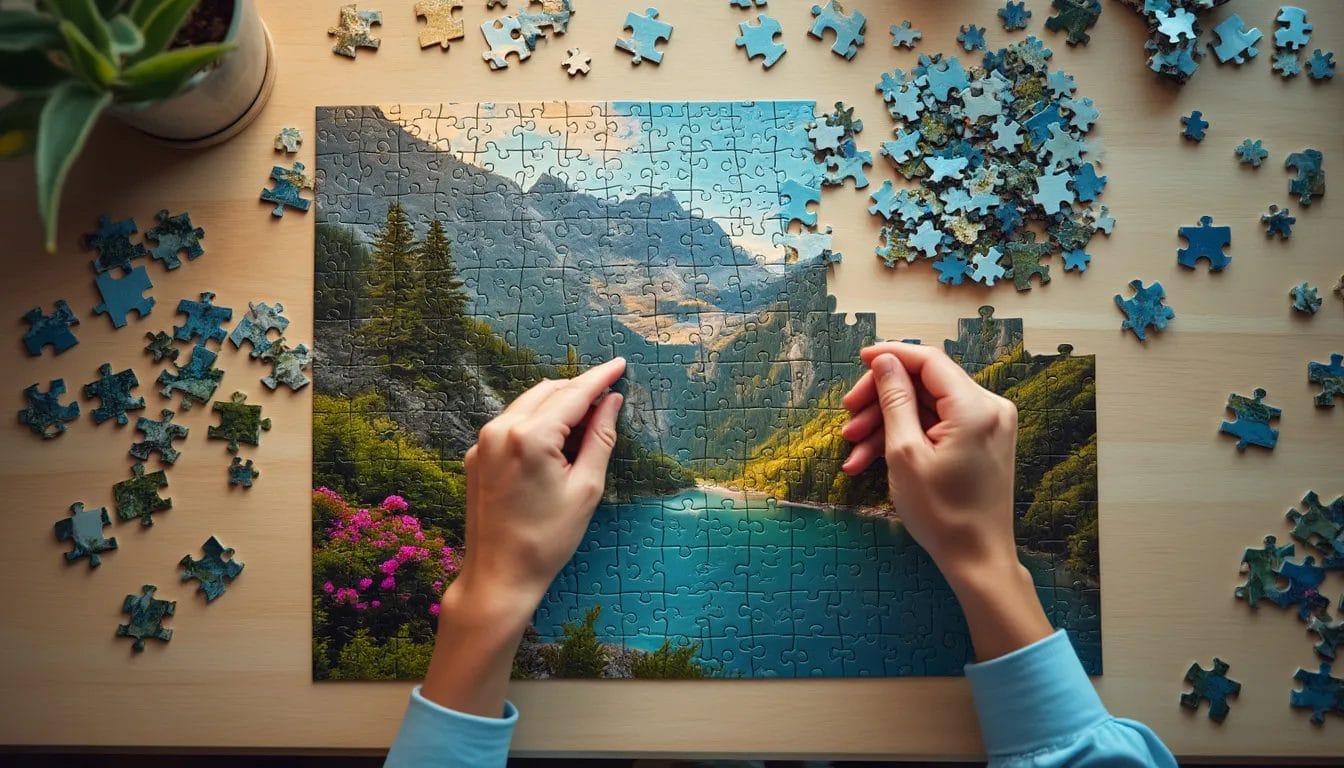
Moving forward, here's a guide to piecing a jigsaw puzzle together with ease.
Best Strategies to Place Edge Pieces First
Starting with the edge pieces is a fundamental strategy when assembling a jigsaw puzzle.
First, identify and separate all edge pieces by their straight edges. This quickly establishes the puzzle's border framework.
Assemble the corners first since they're the easiest to recognize and provide anchor points for other edge pieces. To streamline placement, sort these border pieces by color or pattern, reducing confusion as you piece them together.
Always use the puzzle box image as a reference to align these pieces accurately with the overall design. Completing the border early helps create a defined workspace for assembling the interior sections, setting you up for a smoother puzzle-solving experience.
How to Work with Colors and Patterns in Jigsaw Puzzles
Sorting puzzle pieces by dominant colors and patterns is a highly effective method for efficiently assembling jigsaw puzzles. By grouping pieces into distinct sets, you can focus on specific image sections. Use the puzzle box as a reference to spot subtle color gradients or repeating patterns, which are key in guiding piece placement.
Start by assembling smaller, easily recognizable sections, like a tree or a building. This way, you'll gradually build the larger image through color and pattern continuity.
Additionally, keep pieces with similar textures or fine details, such as grass or water, in separate groups. This approach helps streamline the assembly process, especially when dealing with uniform colors, where you'll rely on subtle differences in patterns or shading to correctly place the pieces.
What Tricks Can Help with Difficult Jigsaw Puzzles?
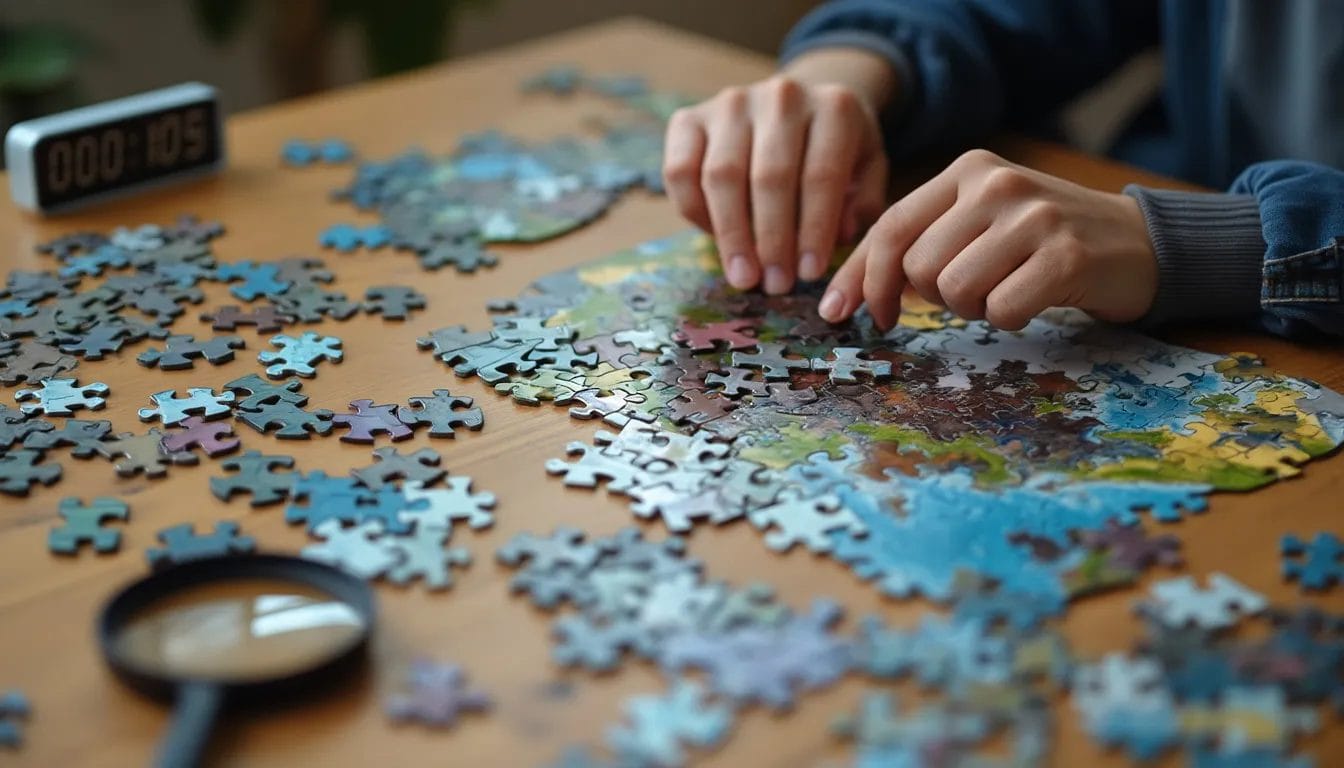
If you're struggling with a tough jigsaw puzzle, here are some tips that might make things easier.
How to Tackle Small Sections of a Puzzle
Focus on piecing together smaller, distinct sections of your puzzle first, such as easily recognizable objects or unique patterns. This method helps build momentum and simplifies the overall challenge. Use the puzzle box image as a reference to pinpoint and isolate the pieces that match these areas.
Concentrating on one small section at a time and completing it before moving on will help you stay focused and avoid feeling overwhelmed. Additionally, sort your pieces by unique shapes and colors within each section. This approach minimizes confusion and speeds up the assembly process.
Remember to rotate pieces to see how they fit from different angles, especially in the more intricate parts of the puzzle.
What to Do When You Feel Frustrated With Your Puzzle
If you feel frustrated while working on a puzzle, taking a short break is often beneficial. Stepping away for a moment can refresh your perspective and allow you to see connections you might've missed.
When patience wears thin, try shifting your focus to another section of the puzzle. This change can reduce your frustration and bring a new sense of progress.
Additionally, collaborating with a friend or family member can provide fresh insights and make the experience more enjoyable. They might spot something you overlooked or suggest a new strategy.
Is It Beneficial to Have a Dedicated Workspace for Puzzles?
Having a dedicated workspace for puzzles can enhance your solving efficiency. When setting up this space, prioritize a flat surface and ample lighting. This setup reduces eye strain and keeps you focused, making it easier to spot the right pieces.
Use a puzzle board for an even better experience. It not only keeps your puzzle secure but also allows you to move it if needed without losing your progress.
Keep your workspace clutter-free to ensure all pieces are visible and easily accessible. This will reduce the time you spend hunting for the right piece.
Plus, having the puzzle box image nearby helps you quickly determine where each piece fits, further speeding up the process.
How Does the Size of the Puzzle Affect Solving Speed?
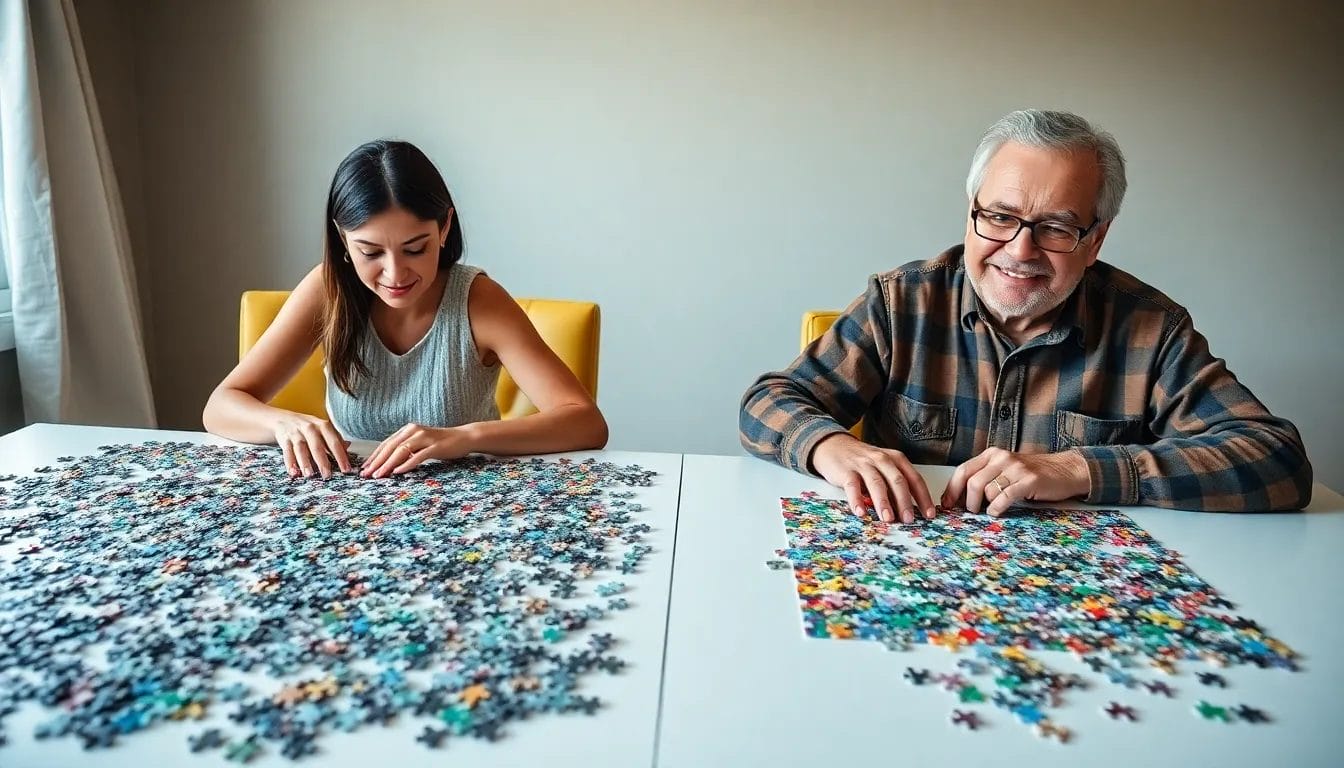
The size of your puzzle greatly influences how fast you can solve it. For larger puzzles, you'll need to adjust your approach. You must use trays or sorting mats to effectively manage the numerous pieces before assembly.
When tackling smaller puzzles, you can often jump straight into assembly with less pre-sorting, speeding up the overall process.
How to Adjust Your Approach Based on Puzzle Size
Adjusting your approach based on the puzzle size can enhance your solving speed. A 500-piece puzzle has fewer pieces and generally simpler patterns. This puzzle size is perfect for quicker sessions or if you're starting out. You'll find it easier to see progress, which keeps motivation high.
Conversely, tackling a 1000-piece puzzle demands more strategic planning. Due to the increased complexity and number of pieces, you'll need to sort pieces meticulously by color, pattern, or edges. This puzzle size requires more patience and a larger workspace to manage the spread effectively.
What Items Can Be Used to Organize Pieces Before Assembly?
As you explore different strategies for handling puzzles of varying sizes, consider the tools that can help you organize your pieces before assembly. Sorting trays and small containers are essential for separating pieces by color, pattern, or edge type, making the assembly process faster and more efficient.
For larger puzzles requiring more intricate sorting, using puzzle mats or boards with compartments can be helpful. These tools not only keep your pieces organized but also prevent them from getting lost.
Conclusion
Now, you're equipped with top strategies for conquering jigsaw puzzles quickly! Start by organizing pieces and building the border. Sort pieces into trays using color and pattern, working in a bright area. Tackle small sections to gain momentum, and rotate pieces to find the perfect fit.
Remember, taking short breaks helps refresh your mind, making you more efficient. Whether you're solving a small or large puzzle, these tips will boost your speed. Happy puzzling!
FAQs
What Is the Trick to Solving Puzzles?
To solve puzzles, organize the pieces, start with the edges, and work on distinct sections. Use the box image for guidance, and remember to take breaks to refresh your perspective!
What's the Fastest Way to Do a Puzzle?
To speed up your puzzle-solving, first lay out all pieces face-up. Start with the edges, then group by color or pattern. Focus on small sections, and take breaks to refresh your perspective.
How Long Should a 1000 Piece Puzzle Take?
You should expect to spend about 5 to 10 hours on a 1000-piece puzzle if you're experienced. Depending on the puzzle's complexity and strategy, beginners might need 15 to 20 hours.